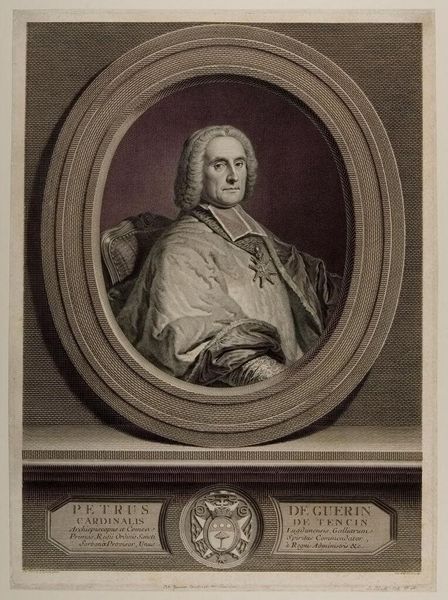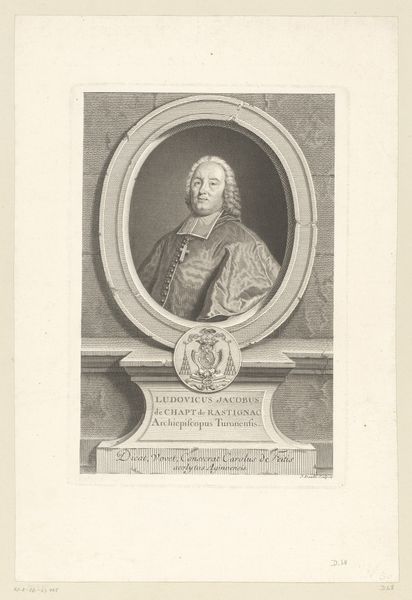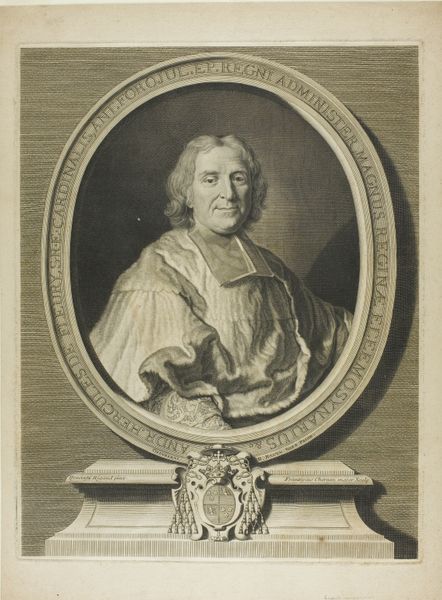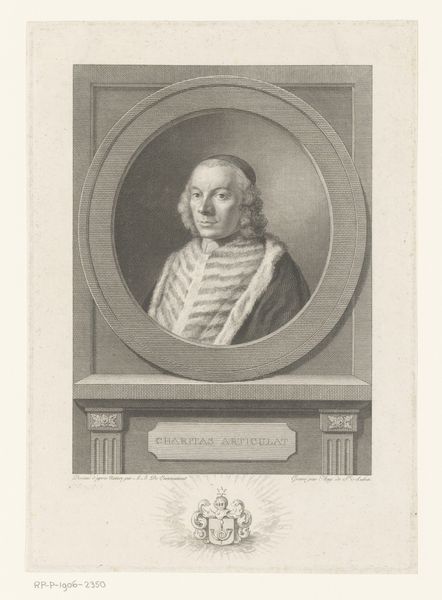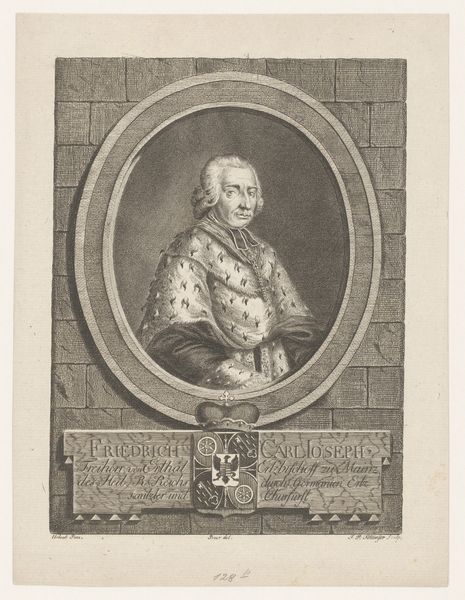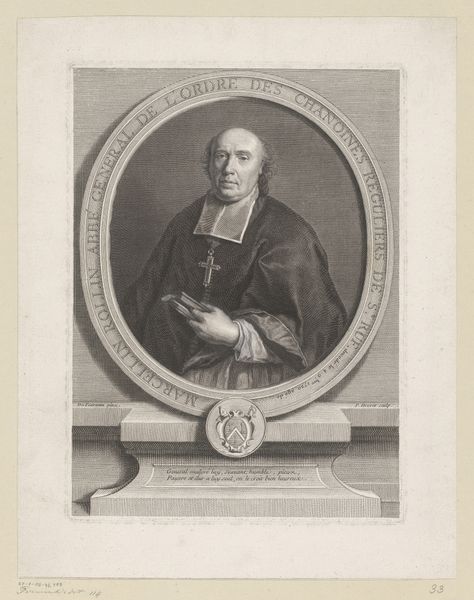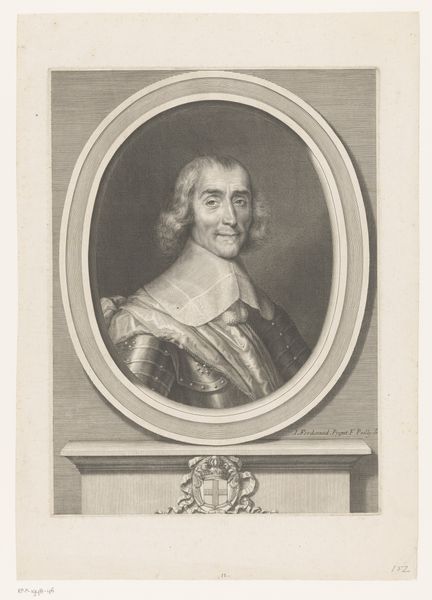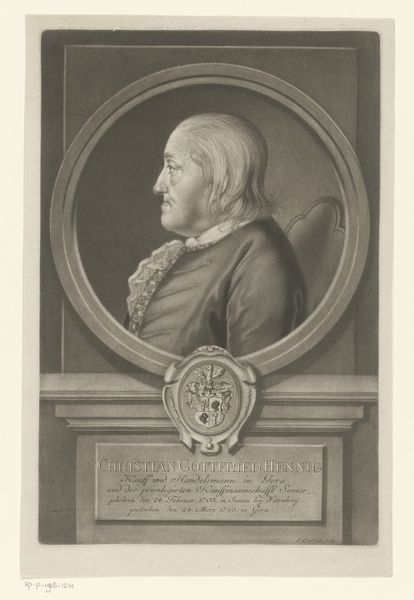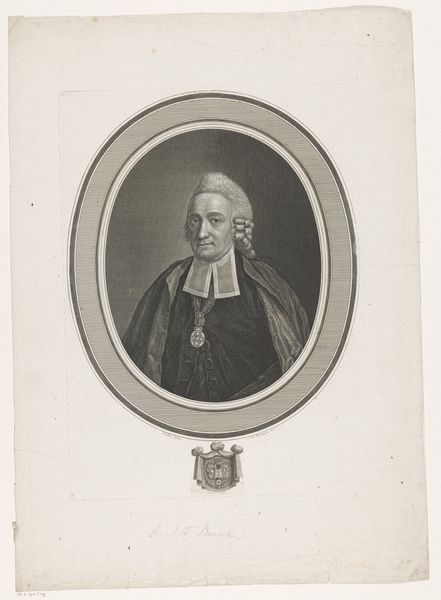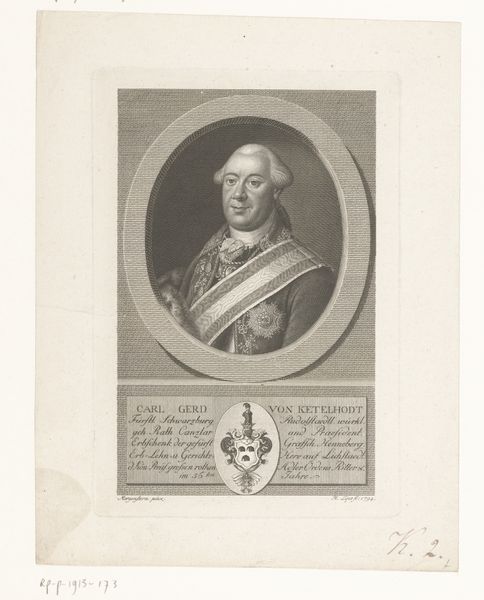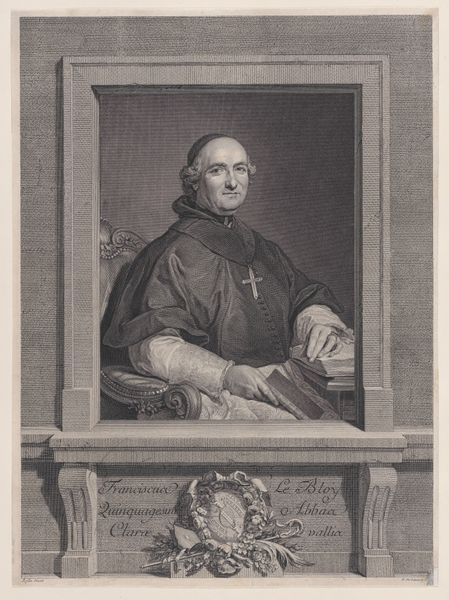
print, engraving
#
portrait
#
neoclacissism
# print
#
old engraving style
#
19th century
#
history-painting
#
academic-art
#
engraving
Dimensions: height 465 mm, width 338 mm
Copyright: Rijks Museum: Open Domain
Curator: This is "Portret van Pierre Guérin de Tencin," a neoclassical engraving made by Johann Georg Wille between 1725 and 1808. Notice how Wille employs a rigorously controlled line, creating a portrait of both power and restrained elegance. Editor: The first thing that strikes me is the medium. The act of engraving demands patience. What does it mean to painstakingly transfer someone’s likeness onto a metal plate with all its implications for labor and reproduction? Curator: That’s insightful. Let's consider the composition, then. The oval frame lends a classicizing air. The subject, identified by inscriptions, is situated firmly within this constructed space. See how Wille models form through meticulous cross-hatching, the light gently catching the sitter's face. It exudes control. Editor: I can see the control. Engraving multiplies and disseminates; this cardinal is becoming reproducible! The print material’s potential for social levelling contrasts his very lofty hierarchical position in society. Curator: Indeed, printmaking had quite a political charge, it seems, if one looks beneath the veneer of power. Yet Wille’s technical mastery gives this artwork a visual clarity, making it easily legible and powerful in conveying authority. The lines all converge to convey a sense of resolute intellect. Editor: The scale also affects how this authority disseminates. What effect does the smallness of the print – something easily shared – have on the perception and material movement of power here? How might it challenge the idea of singular authorship? Curator: Considering how Wille painstakingly recreated texture with just line and negative space, perhaps authorship remains key? There is immense effort on display, especially with its formal conventions conforming to academic artistic values of the era. Editor: Yet academic standards and modes of reproduction meet in a complex relationship. Thanks to this work, I’m rethinking what it means to labor making multiples. Curator: It gives one a fresh perspective on both form and making. Editor: Yes, together, the artistic intention and material result can reveal how intertwined they truly are.
Comments
No comments
Be the first to comment and join the conversation on the ultimate creative platform.
